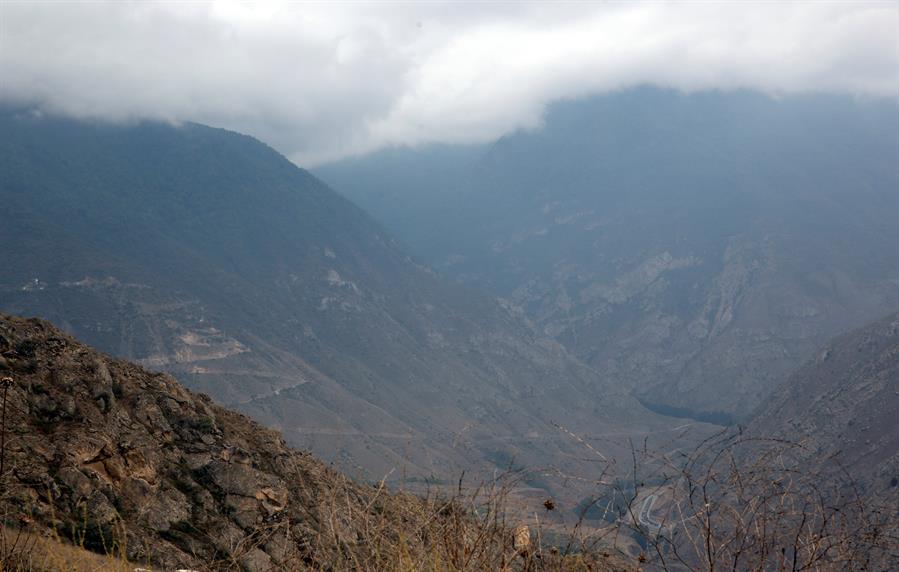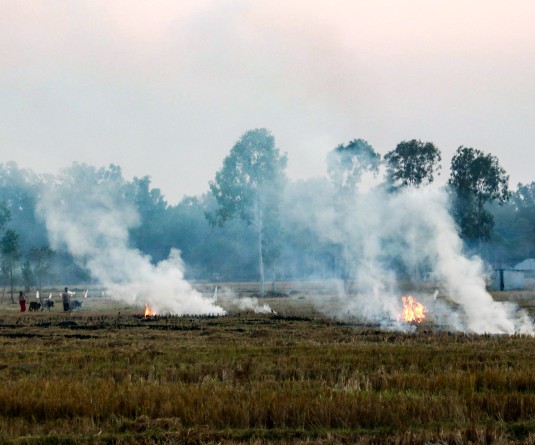Iran's ancient forests are undiscovered oasis

A general view of the Hyrcanian forests recently added to the UNESCO World Heritage List, in Mazandaran province, northern Iran on August 28, 2019. (EPA-EFE File Photo)
Gorgan, Iran, November 28 (EFE): Iran's ancient woodlands that date back some 50 million years make them a unique place that is still unknown to many.
The Caspian Hyrcanian Mixed Forests straddle a huge massif that extends 850 kilometers along the southern coast of the Caspian Sea along the northern Iranian provinces of Gilán, Mazandarán and Golestan.
This summer the ecosystem was named a Unesco World Heritage Site and described by the organization as unique.
"The Hyrcanian forests are witnesses of the ancient forests of the world since they have survived between 35 and 50 million years," Ramezan Ali Qaemi, director of the world heritage headquarters of this ecosystem in Golestan, proudly told Efe.
Walking among the trees, Qaemi explained that there were similar forests in Europe and in areas of the former Soviet Union, but during the ice age they were completely lost.
"It could be said that the Hyrcanians are the oldest (forests) in the world."
According to Unesco, these forests are between 25 and 50 million years old.
Their surface area was reduced during the Quaternary Period's dramatic climate changes and glaciations, and expanded again when the temperatures stabilized.
Its extension is still considerable, blanketing around two million hectares of rich fauna and diverse flora, the Iranian expert added.
"The species of plants and animals present in this ecosystem are incomparable with Europe. "Perhaps 100 hectares of the forests of Europe are comparable to one hectare of this forest," Qaemi continued.
Unesco has documented the existence of over 3,200 vascular plants and 58 species of mammals, including the iconic Persian panther and endangered wild goat.
The fact that there are carnivorous at the top of the food chain, such as leopards, implies that there are also herbivores and that ecosystem is appropriate for a range of species to thrive, the expert added.
Among the meat-eaters are also wolves, caracals (wild cats) and golden eagles.
Highlights also include lushes flat-leaved species of trees, which according to Qaemi, offer a genetic stock of these tree-types which have medicinal properties.
Due to its isolation, the areas now protected by Unesco are home to many endangered and endemic plant species at a regional and local level.
One of them is the yew, a conifer native to the region and whose extract is used to cure some cancers, Qaemi said.
Mediterranean cypress, with their elongated branches, are also used as medicinal plants.
As for animals, tigers and lions would have roamed the forest in the past, but have since disappeared.
The Persian leopard is the mother of all predators today and the forests hold the greatest concentration of the creatures in Iran's mountainous forests.
The Dasht-e Lut, in the southeast of the country, was named as a natural world heritage in 2016 and until the inclusion of the Hyrcanian forests this year was the only one site from Iran on that list.
The middle eastern country has always been a big player on the world cultural heritage scene, with 22 registered sites including the main square of Isfahan, the capital of the Safavid dynasty, and the Achaemenid Empire's architectural gems of Persepolis.
In a bid to promote and protect Iran's impressive array of largely unknown natural oases, Persian authorities have tried in recent years to ramp up recognition and protection of parks and places of environmental interest.
For Qaemi the advantages Unesco recognition offers are a welcome change.
Loans for the protection of these areas and an increase of eco-tourism as a result of international recognition are both good news for one of the world's most ancient forests.






